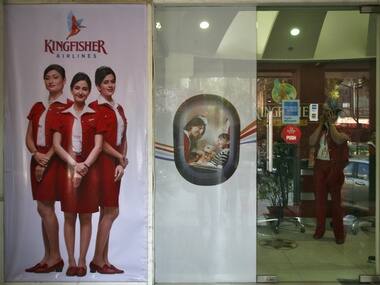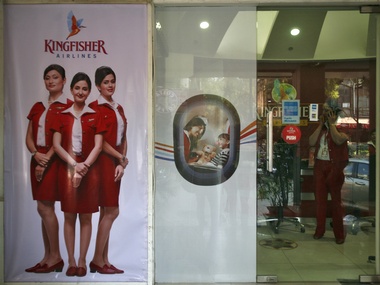New Delhi: The weakening of Kingfisher Airlines has benefited Jet Airways and Air India the most. Kingfisher went from being the single largest airline to the smallest in Indian skies in a matter of months in the last financial year. And data released by the Directorate General of Civil Aviation (DGCA) show that the full-service carriers gained more than low-cost carriers (LCCs) in March. Full service Jet Airways and Air India reaped more benefits from the reduction in overall capacity in the market due to Kingfisher’s decline.
[caption id=“attachment_282306” align=“alignleft” width=“380” caption=“Reuters”]
 [/caption]
[/caption]
“While SpiceJet experienced growth of 28.1 percent and GoAir (+11.5 percent) and IndiGo (+13.6 percent) also witnessed double-digit growth, Air India and Jet Airways capitalised on the situation at Kingfisher Airlines, which saw a 67.5 percent year-on-year slump in domestic passengers,” the Centre for Asia Pacific Aviation (CAPA) noted in a report.
During March, Jet reported strong growth of 26.5 percent - this also reflects a movement of JetLite operations into JetKonnect, which reports traffic under the Jet Airways Group (as a result JetLite traffic declined 6.6 percent). Air India reported double-digit passenger growth of 21.5 percent in the month.
The severe capacity cutbacks by Kingfisher - it now operates only 16 aircraft with another four on standby against 64 aircraft earlier in 2011 - also meant that overall domestic market growth slumped to just 1.1 percent year-on-year in March to 4.87 million passengers. This marks the slowest month of domestic passenger growth since May 2009 when passenger levels declined 4.4 percent. So while Kingfisher’s troubles may have led some competitors having better times, overall market growth has begun to get severely affected. Passenger traffic increased 6.55 percent between January and March this year to 15.3 million.
“While the market has now seen 34 consecutive months of year-on-year growth, the result for March 2012 marks the third month of single-digit growth in the past four months. This was preceded by 16 months of double-digit growth between September and November 2011,” CAPA noted.
Impact Shorts
More ShortsAnd CAPA’s forecast for 2012 is not too rosy either. It says that while airlines may have learnt the lesson of not growing capacity mindlessly after the Kingfisher debacle, overall domestic passenger growth is expected to slow down this year. “Domestic passenger growth will likely slow in 2012 to under 10 percent as Indian aviation faces its most critical challenges in 2012 since the advent of the 2004 industry reforms.”
Already, the peak summer season has witnessed a decline in passengers compared to 2011 because of a steep increase in fares. Manmeet Ahluwalia of travel portal expedia.com says domestic airfares are up by anywhere between 10-30 percent this summer over last. Himanshu Singh of travelocity.com says that though the number of passengers boarded has reduced, sales levels - yields as well as topline - have increased 5-7 percent on higher ticket prices.
CAPA says Kingfisher is likely to remain India’s smallest carrier in the coming months, as it continues its much-curtailed summer 2012 schedule, operating approximately 120 daily services with 20 dedicated aircraft of which only 16 may be fully operational. But it remains optimistic over improved profitability of airlines in 2012 on better yields, lesser capacity additions which improve load factors (number of occupied seats versus number of seats available in each plane).
)